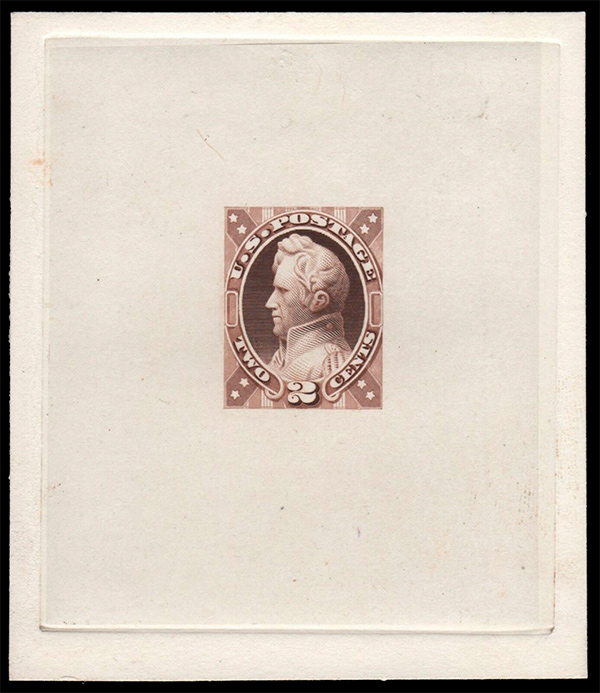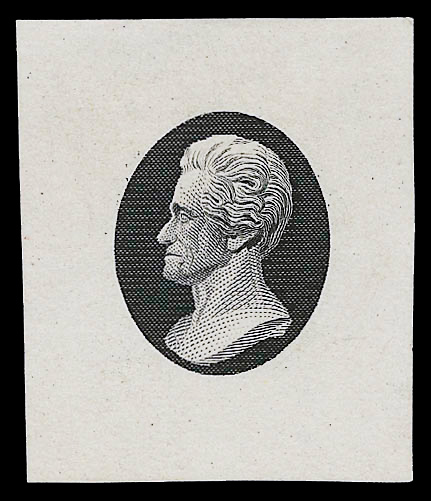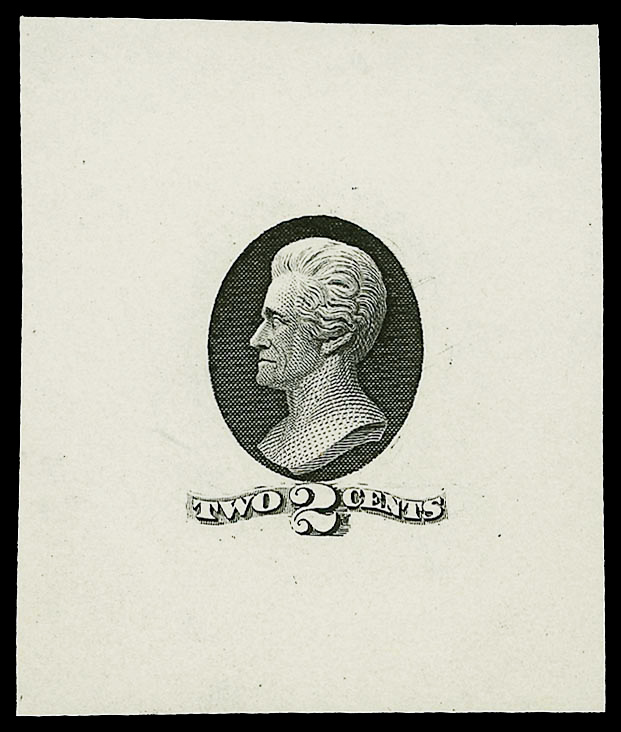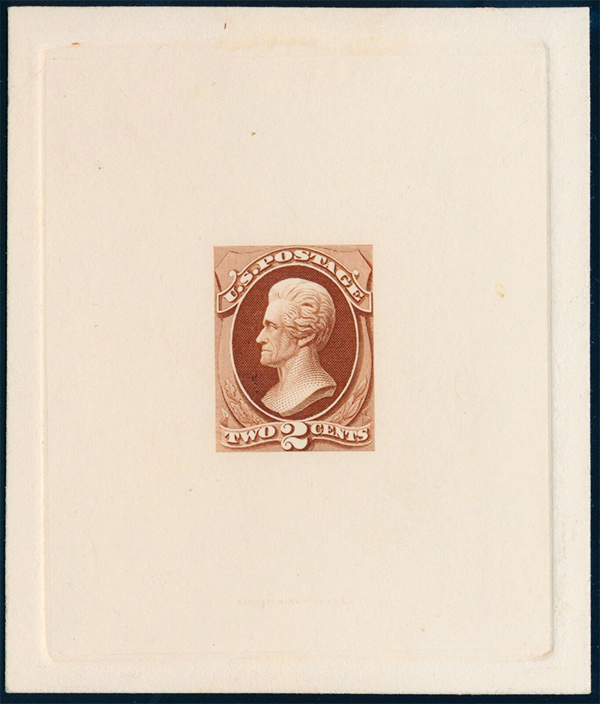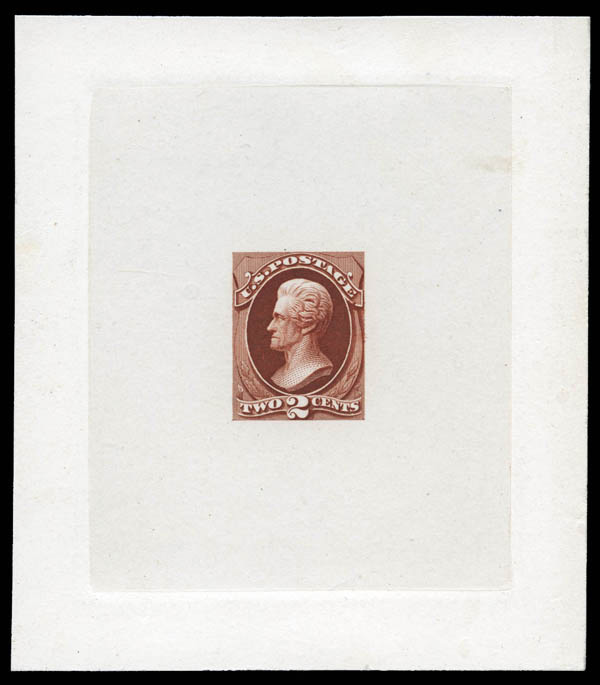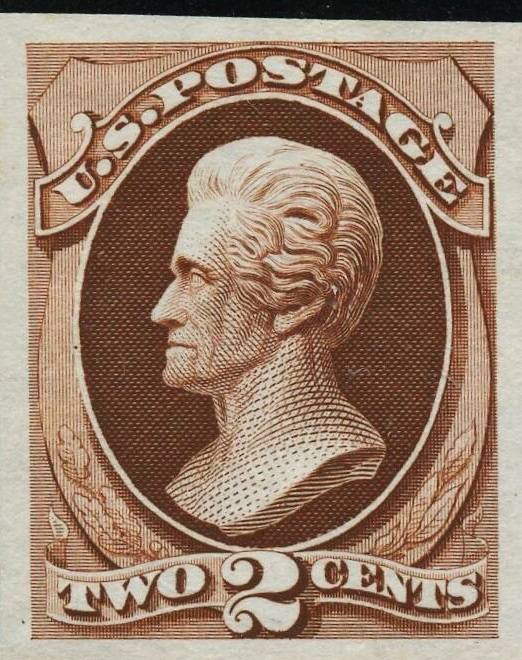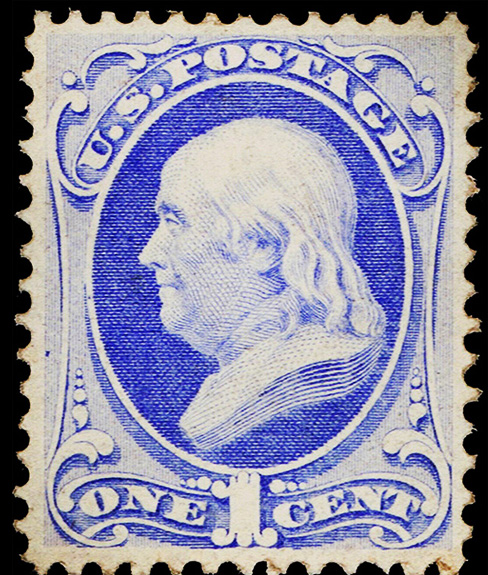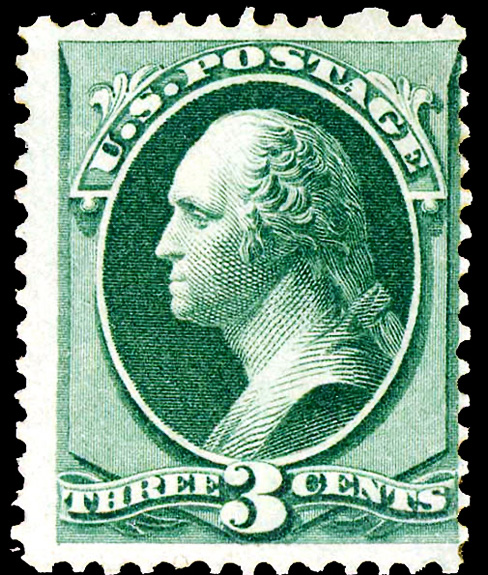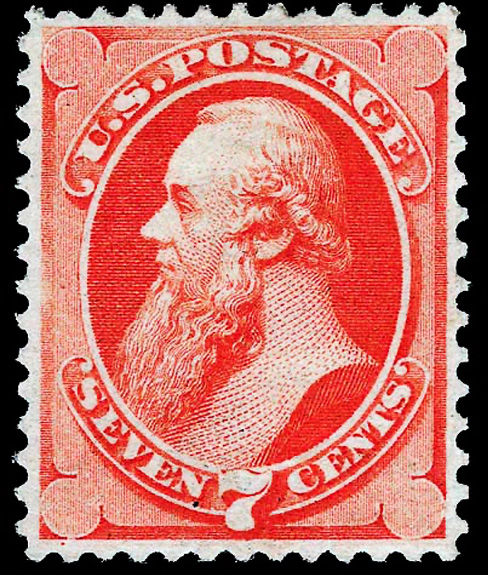Basic Info
2¢
Red Brown, pale red brown or dark red brown
Type of Paper: Hard white wove paper, thin to medium thick
Subject: Andrew Jackson
Number issued: 250,000,000
Perforations: 12
Scott #: 146
Printer: National Bank Note Company
Date of Issue: April 12, 1870
Earliest Documented Use: May 7, 1870
Value
Used
$2 - $10
No postmark with gum (MH)
$20 - $60
Full perfect gum, no postmark
no trace of stamp hinge mark (MNH)
$70 - $100
Postal rates at the time
Up to 3000 miles, per ½ oz.: 3 cents
Over 3000 miles, per ½ oz.: 10 cents
Drop letters: 2 cents
Mainly used for local first mail and drop mail.
Plate #'s
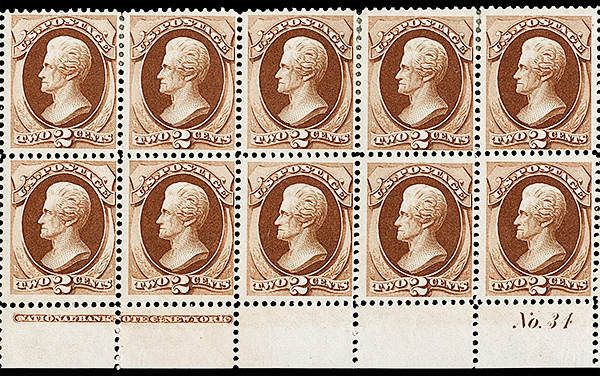
#146 was issued with the following plate #'s
Imprint and plate number
2, 13-15, 28, 30, 34-35, 45-47
The design inspiration
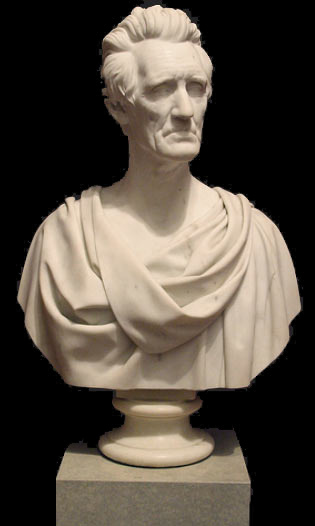
The design was taken from the portrait bust of Andrew Jackson by Hiram Powers. Now at Metropolitan Museum of Art in New York City.
Double Impression
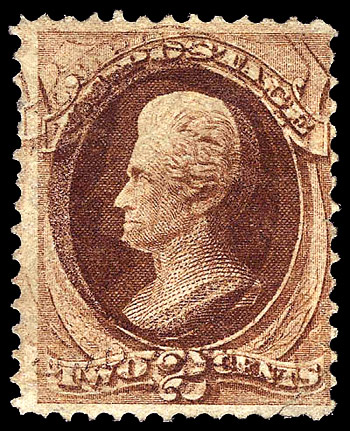
Double Impression
146d
Bisects
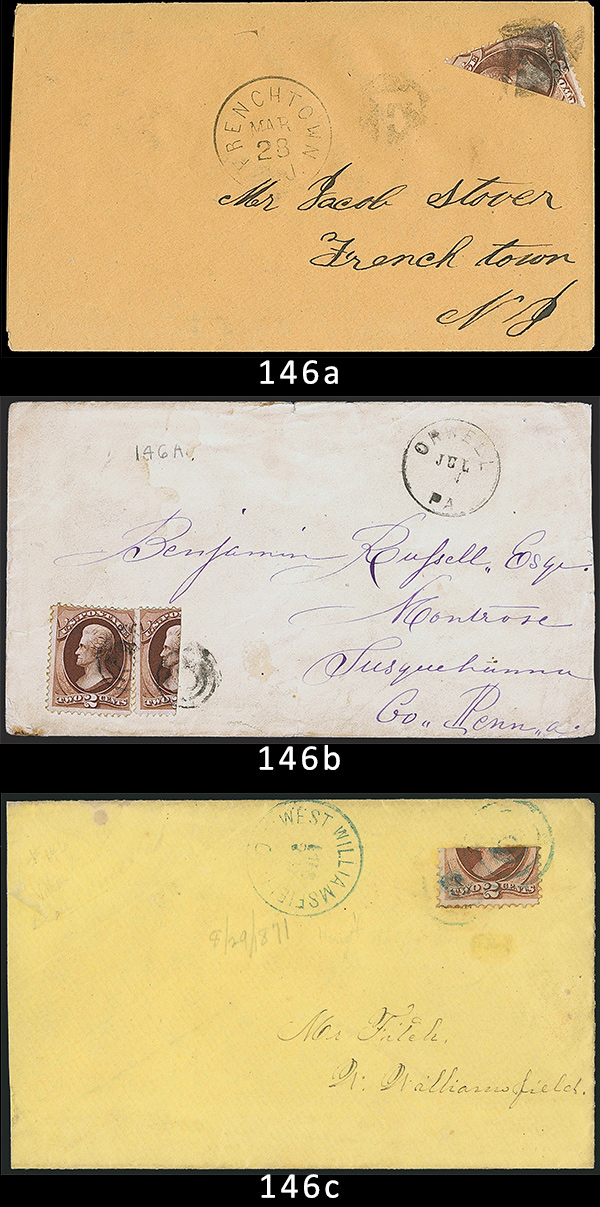
A few post offices in Pennsylvania and New York ran out of either 1¢ or 3¢ stamps. To tide them over until the next delivery of stamps they resorted to dissecting the 2¢ stamp. On cover, as shown above they are valued at $800 to $1,300 each.
#146 Characteristics
The shades
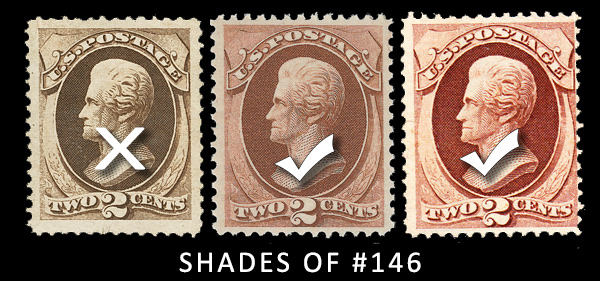
A shade with a check mark could be #146
The paper
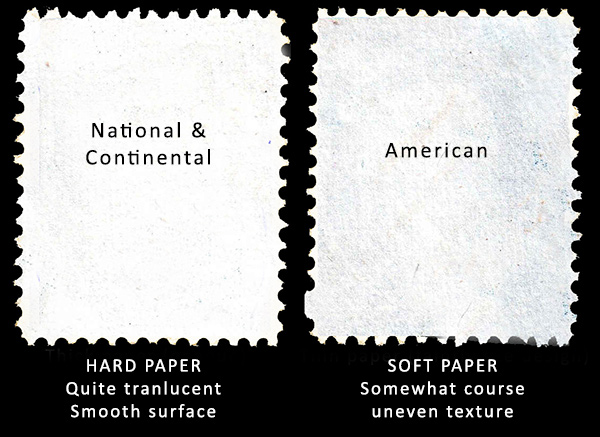
#146 is printed on hard white wove paper, thin to medium thick.
Hard paper was used by the National Bank Note Company and the Continental Bank Note Company. Soft paper was used by the American Bank Note Company,
The hard paper of the Bank Note issues is fairly white, perhaps it might better be called grayish white or sometimes a somewhat bluish white, while the soft paper seems slightly yellowish when compared with the hard paper.
Soft paper has a looser weave and more porous paper than hard paper, so it feels softer, displays a mesh or weave when viewed by holding the stamp between your eyes and light so that you are looking “through” the stamp.
Some people can also ID hard paper be “flicking” the edges and thereby “feeling” the stiffness of the paper versus the feel of soft paper if flicked in the same way. There's more of a snap to the hard paper.
On high magnification the perforation tips on soft paper will have more strands of paper sticking out than hard paper.
Soft paper is fairly dead looking under a long wave UV light ( (briefly and from a reasonable distance in a darkened room) while hard paper reflects more light. If reference copies of stamp designs known only on hard paper or soft paper are viewed under UV light, the difference in paper brightness should be apparent.
For a reference stamp obtain the inexpensive 1861 3¢ (#65), it is only available in hard paper.
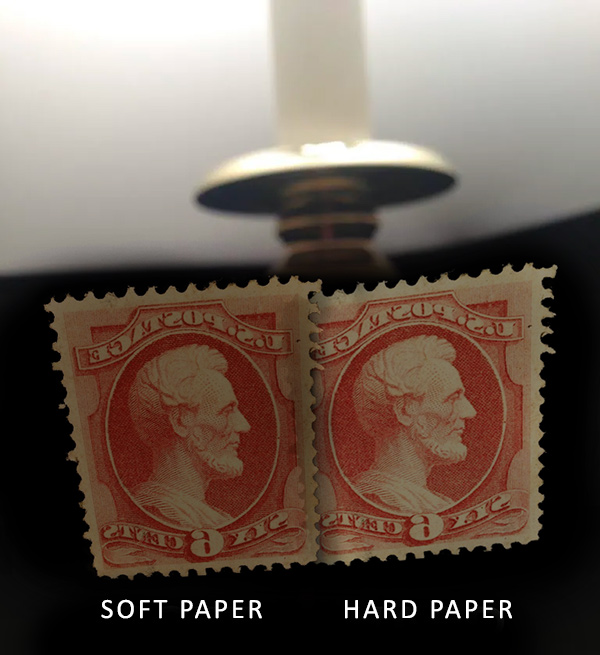
A simple test is to hold a stamp to a lamp, you will see the hard paper is more translucent.
The Secret Mark
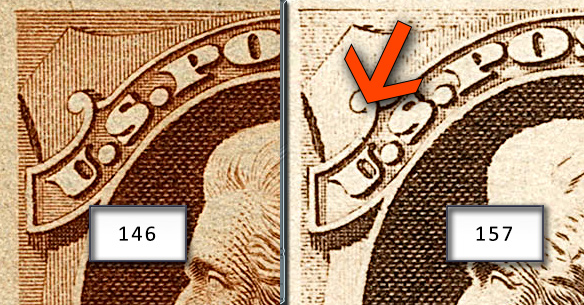
Look for a dot of color where the ball joins the border of the upper label. If it is present you have a copy of #157
Note: This secret mark is mostly absent from #157
Earliest known use
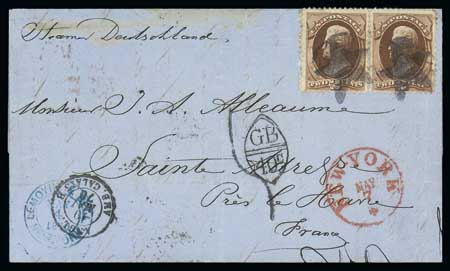
The earliest known use is May 7, 1870
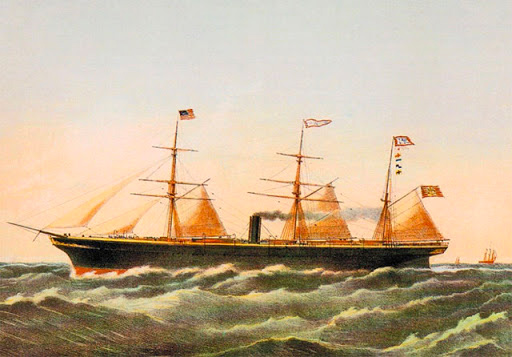
The steamer shown above is "Deutschland" which sailed from NY to Bremen and carried the above cover. The steamer is flying the flag of the North German Lloyd Company,
Notable Sales


Largest known multiple
Sold December 2021 for $6,490
Explore Robert Siegel's Auction Galleries
Essay's and Proofs

146-E1
CONTINENTAL BANK NOTE COMPANY
Engraved die on India
Die sunk on card
unadopted design

146-E1
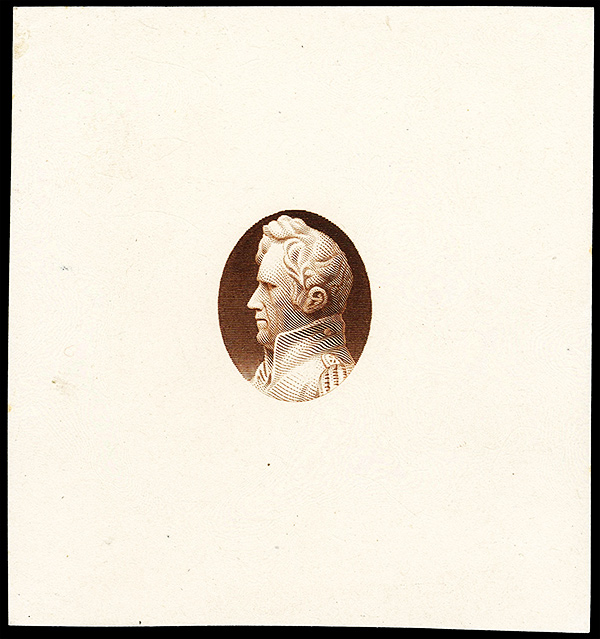
146-E2
NATIONAL BANK NOTE COMPANY
Engraved die on India
Die sunk on card
Unadopted vignette

146-E2
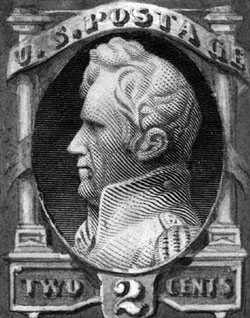
146-E3
NATIONAL BANK NOTE COMPANY
Engraved die on India
Die sunk on card
Unadopted design

146-E3
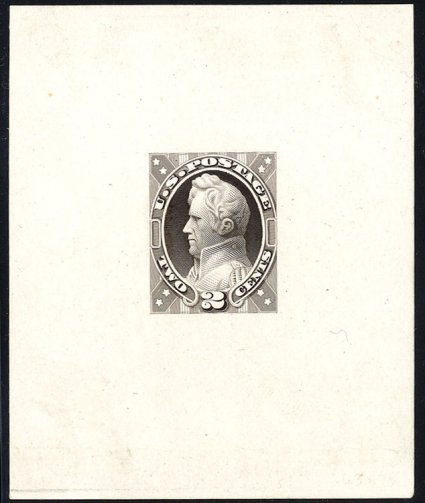
146-E7b
NATIONAL BANK NOTE COMPANY
Large die essay on ivory glazed paper unadopted design

146-E7b





